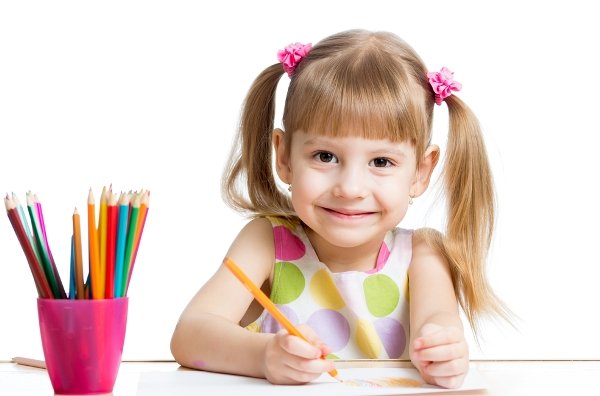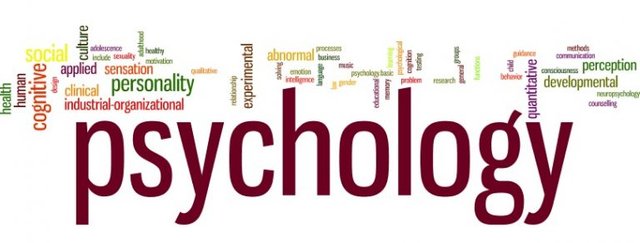The 4 stages of Piaget's cognitive development in children
Hello friends, after a long period without publishing in this area of psychology I return with a very important content and for that reason I want to start in this new adventure in a big way, today I will speak in this post about the theory of learning of the constructivist psychologist Swiss Jean Piaget, in this article you can see a summary of the aforementioned theory as well as reference is made to The 4 stages of Piaget's cognitive development in children, Piaget's studies are now of great importance and are already applied in the Education for the intellectual and cognitive development of children, this has allowed to exercise a transcendental influence in evolutionary psychology and modern pedagogy. You are invited to read the article ... if you have not done it yet!

The Cognitive Development Theory of Jean Piaget
Cognitive theories focus on the study of the structure and development of thought processes, especially how this affects the understanding of the person about their environment. Of all the cognitive theories one of the most popular is the one that is extracted from the work of Jean Piaget.
Piaget assumed that children at each age have the capacity to solve certain issues and problems. He began by studying the mistakes of children. Piaget realized that children of the same age made the same mistakes and he therefore establishes an evolutionary sequence in the cognitive process.

The concept of stages of development of Piaget
The central idea of Piaget's stage was that it was a period of consolidation and "perfection" of structures (operative) and that these combine and pour into a balance.
Piaget characterizes this culminating moment of each stage as that of the implementation of an assembly structure (overall structure or structure). We see, from there, that Piaget's basic notion of structure (particular) is prolonged in "global structure" to characterize a stage and that this fact is deeply linked to another of Piaget's key notions: balance or equilibrium.
Piaget gives us a perfectly holistic or systemic conception in his approach to stadiums. While exposing these ideas, Piaget recognized that the existence of their assembly structures met with a phenomenon that he himself had consigned and that he called decalogues, that is, lags or mismatches in the application of the same structure in several domains. On the other hand, the fact of establishing relationships between particular structures in order to define a "global structure" is not a trivial problem: it is the key to defining the system, that is, the assembly structure. It seems that Piaget tried to find the counterpart of each of these (or some of these) in mathematical models that described progressive ways of operating the mind, but then not insist on this parallelism. Towards the end of his career, he recognized that his notion of assembly structure should not be taken too literally.
Cognitive structures change over time, configuring stages of development. For those structures to configure a stage, they must keep an invariable temporal order, without caring too much about the age at which each of them appears, but they do integrate naturally into later ones.
These stages take place in a fixed order in all children, and in all countries. However, age may vary slightly from one child to another.
Periods or stages of child development

First period: Sensory-motor stage (from 0 to 2 years old)
In this period the child uses his senses and motor skills to know objects and the world (see what he can do with things). Learn what is called the permanence of the object.
This stage takes place between birth and two years of age, as children begin to understand the information their senses perceive and their ability to interact with the world. During this stage, children learn to manipulate objects, although they can not understand the permanence of these objects if they are not within the reach of their senses. That is, once an object disappears from the child's view, it can not understand that that object (or person) still exists. For this reason they find the game that many adults play with their children so attractive and surprising, consisting of hiding their face behind an object, like a cushion, and then "appearing" again. It is a game that contributes, in addition, to learn the permanence of the object, which is one of the greatest achievements of this stage: the ability to understand that these objects continue to exist even if you can not see them. This includes the ability to understand that when the mother leaves the room, she will return, which increases her sense of security. This ability usually acquired towards the end of this stage and represents the ability to maintain a mental image of the object (or person) without perceiving it.

Second period: Pre-operational stage (from 2 to 7 years)
It covers the two to the first five years of the child. In this phase, the child maintains an egocentric position, which makes him unable to adopt the same point of view of others. We observe that children are able to use symbolic thinking, which includes the ability to speak. Humans use signs to know the world and children already handle them in this period. However, this symbolic thought is still an egocentric thought, the child understands the world from his perspective.
It begins when the permanence of the object has been understood, and extends from the two to the years. During this stage, children learn how to interact with their environment in a more complex way through the use of words and mental images. This stage is marked by self-centeredness, or the belief that all people see the world in the same way as he or she. They also believe that inanimate objects have the same perceptions as they do, and can see, feel, hear, etc.
Also in this phase, the way of categorizing the objects is done globally, based on an exaggerated generalization of the most outstanding characters.
Another important factor in this stage is Conservation, which is the ability to understand that quantity does not change when the form changes. That is, if the water contained in a short, wide glass is poured into a tall, thin glass, children at this stage will believe that the taller glass contains more water due only to its height. This is due to the inability of children to understand reversibility and because they focus on only one aspect of the stimulus, for example height, without taking into account other aspects such as width.
It lasts up to seven years, and is characterized because the child is able to think things through the establishment of classes and relationships, and the use of numbers, but all this intuitively, without being aware of the procedure used.
In this period, the child first develops the capacity of conservation of the substance, then develops the capacity of the conservation of the mass, and then the weight and volume.
Piaget points out that the passage of the sensorimotor period to this second period occurs mainly through imitation, which the child assumes individually, and which produces the so-called mental image, in which language plays a large role.

Third period: Stage of specific operations (from 7 to 12 years)
In this period that goes from 7 to 11 years, the child can apply the logic, apply principles. The child no longer knows intuitively but rationally. The child makes use of some logical comparisons, such as: reversibility and seriation. However, it still does not handle abstractions. His thinking is anchored in the concrete action he performs. It's the school period.
This stage is marked by a gradual decrease in egocentric thinking and by the increasing ability to focus on more than one aspect of a stimulus. They can understand the concept of grouping, knowing that a small dog and a large dog are still both dogs, or that the various types of coins and bills are part of the broader concept of money.
You can only apply this new understanding to concrete objects (those that have experimented with your senses). That is to say, the imaginary objects or those that have not seen, heard, or touched, continue to be something mystical for these children, and abstract thought has yet to develop.

Fourth period: stage of formal operations (from 12 years and up)
It goes from 12 years old and up. We talk about the teenager and the adult. It is the stage of abstract thinking, not only think of reality, but how you can do things, you can hypothesize.
In this period, children begin to dominate relations of proportionality and conservation. In turn, they systematize the concrete operations of the previous period, and develop the so-called formal operations, which not only refer to real objects like the previous one, but also to all possible objectives. With these operations and with the language proficiency they have in this age, they are able to access abstract thinking, opening up to them the perfect and critical possibilities that facilitate reason. They can apply reversibility and conservation to real and imagined situations. They also develop a greater understanding of the world and the idea of cause and effect.
This stage is characterized by the ability to formulate hypotheses and put them to the test to find the solution to a problem.
Another characteristic of the individual at this stage is his ability to reason against the facts. That is, if they give an affirmation and ask him to use it as the basis of a discussion, he is able to perform the task. For example, they can reason on the following question: What would happen if the sky were red?
In adolescence they can develop their own theories about the world.
This stage is reached by most children, although there are some who can not reach it. However, this inability to achieve it has been associated with lower intelligence.
To summarize, for Piaget the whole process of developing intelligence is a process of stimulation between the two aspects of adaptation, which are: assimilation and accommodation.
Do not miss our interesting videos about Piaget's work and subscribe to our YouTube channel to receive more news.

Piaget I, comparison with biology:
Piaget II, assimilation and accommodation:
Piaget III, reflections and schemes:
Piaget IV, the notion of object:
Piaget V, adaptation and learning:
References :
- https://www.learning-theories.com/piagets-stage-theory-of-cognitive-development.html
- https://www.verywellmind.com/piagets-stages-of-cognitive-development-2795457
- https://www.simplypsychology.org/piaget.html
- https://www.learningrx.com/4-cognitive-stages-for-child-development-faq.htm
- https://blog.cognifit.com/piaget-theory/
- https://www.education.com/reference/article/piagets-stages-cognitive-development/
- https://www.psychologynoteshq.com/piaget-stages/
- https://study.com/academy/lesson/jean-piagets-stages-of-cognitive-development.html
- https://theneurotypical.com/piagets-four-stages.html

Hello,
We have found similar content: https://www.psicoactiva.com/blog/4-etapas-desarrollo-cognitivo-jean-piaget/
Not indicating that the content you post including translations, spun, or re-written articles are not your original work could be seen as plagiarism.
These are some tips on how to share content and add value:
Repeated plagiarized posts are considered spam. Spam is discouraged by the community, and may result in action from the cheetah bot.
If you are actually the original author, please do reply to let us know!
Thank You.
More Info: Abuse Guide - 2017.